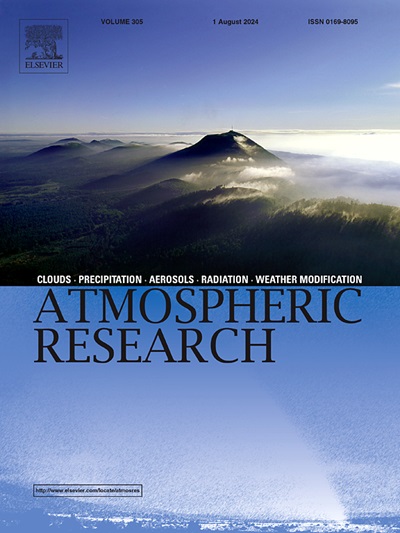Reassessing the ENSO-related Hadley circulation contraction from a regional perspective
IF 4.5
2区 地球科学
Q1 METEOROLOGY & ATMOSPHERIC SCIENCES
引用次数: 0
Abstract
El Niño event usually intensifies Hadley Circulation (HC), meanwhile reducing its meridional extension. From a global perspective, the width change of HC is associated with the meridional movement of baroclinic instability and eddy activities over the subtropics. However, these hypotheses may not work for regional HC. In this study, we construct the three-dimensional structure of HC and investigate the El Niño-related regional HC variability, focusing on the meridional extension. El Niño is associated with an expansion of HC over the central-eastern Pacific but a contraction over the west. Unlike the global HC, the strengthening (weakening) of regional HC usually coincides with an expansion (contraction). Nevertheless, the “narrow” equatorial intensification over the eastern Pacific and the “widespread” subtropical weakening over the Indo-Western Pacific of regional HC collectively form a strengthening and contraction of global HC. This spatial pattern of regional HC intensity changes is tightly associated with the ENSO-related precipitation and sea surface temperature (SST) gradient anomalies. Our result has broad implications for global climate predictability, highlighting the importance of a better understanding of the interactions between the regional HC and tropical/subtropical climate variabilities.
从区域角度重新评估enso相关的哈德利环流收缩
El Niño事件通常增强哈德利环流(HC),同时减少其经向延伸。从全球角度看,HC的宽度变化与斜压不稳定的经向运动和副热带涡旋活动有关。然而,这些假设可能不适用于区域性HC。在本研究中,我们构建了HC的三维结构,并研究了El Niño-related区域HC的变异,重点研究了经向扩展。El Niño与太平洋中东部的HC扩张而西部的HC收缩有关。与全球气候变化不同,区域气候变化的增强(减弱)通常伴随着扩张(收缩)。然而,东太平洋“狭窄的”赤道增强和印度洋-西太平洋区域HC的“广泛的”副热带减弱共同形成了全球HC的增强和收缩。这种区域高温强度变化的空间格局与enso相关降水和海温梯度异常密切相关。我们的结果对全球气候可预测性具有广泛的意义,强调了更好地理解区域HC与热带/亚热带气候变化之间相互作用的重要性。
本文章由计算机程序翻译,如有差异,请以英文原文为准。
求助全文
约1分钟内获得全文
求助全文
来源期刊

Atmospheric Research
地学-气象与大气科学
CiteScore
9.40
自引率
10.90%
发文量
460
审稿时长
47 days
期刊介绍:
The journal publishes scientific papers (research papers, review articles, letters and notes) dealing with the part of the atmosphere where meteorological events occur. Attention is given to all processes extending from the earth surface to the tropopause, but special emphasis continues to be devoted to the physics of clouds, mesoscale meteorology and air pollution, i.e. atmospheric aerosols; microphysical processes; cloud dynamics and thermodynamics; numerical simulation, climatology, climate change and weather modification.
 求助内容:
求助内容: 应助结果提醒方式:
应助结果提醒方式:


